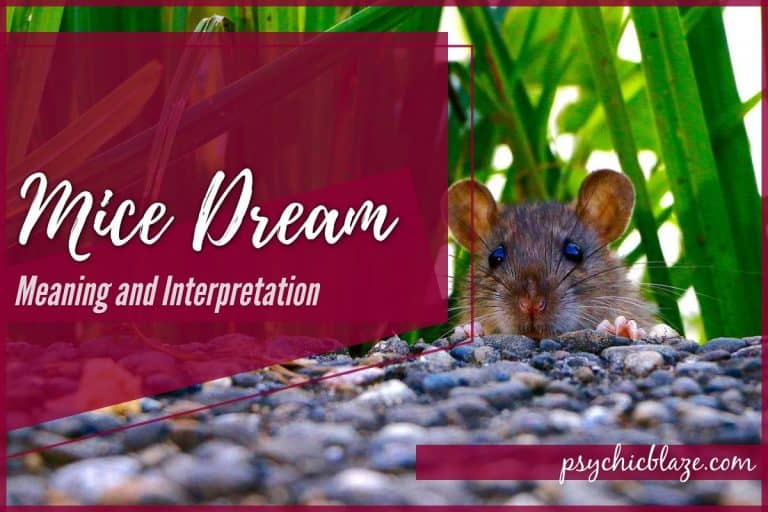Dreaming in Third Person: Psychological Interpretations
Sometimes called cinematic dreams, dreams in the third person are peculiar yet intriguing dreams to have. In these dreams, we observe ourselves from an outsider’s viewpoint, like a movie, as opposed to observing our dreams through our point of view.
Having been likened to out-of-body experiences, dreams in the third person often denote self-alienation, detachment, and desensitization. These dreams also reflect the subconscious need for self-criticism and introspection.
A psychological standpoint can be instrumental in interpreting these dreams, granting us the opportunity to clarify our thoughts and feelings. By doing so, we may unveil unseen issues or unaddressed aspects of ourselves that require care and attention.
Psychological Meanings of Dreams in the Third Person

Psychology often uses dream interpretation to render insights into our minds. According to psychological approaches, the elements of our dreams have cohesive and even symbolic meanings. The perspective of our dreams is one such element.
Dreaming in the third-person perspective implies a sense of detachment or objectivity toward ourselves. This viewpoint may reflect the necessity to critically analyze our actions, behaviors, and emotions, likely highlighting the need for self-evaluation.
This dream can also signal self-alienation. That is, dreams with a third-person view imply becoming disconnected from others and our true feelings. This can be the mind’s way of visualizing the growing mental space between us and the world.
Some dreams can also become more meaningful with a third-person perspective. For example, dreams of being a passenger in an airplane can contextualize the plane as a trap or a cage. Dreaming of driving off a cliff may likewise mean disconnection from harm.
Cognitive Foundations of Dreams in the Third Person
Cognitive processes, the mental functions that drive our understanding and interaction with the world, significantly influence our dreams. These processes encompass our perceptions, memories, and emotions.
Dreaming in the third person can be a cognitive mechanism that allows us to distance ourselves from intense emotions or experiences, offering a more neutral perspective to process and reconcile these experiences.
Cognitive processes can also be organized into mental schemas, which play a role in forming our dreams. Schemas are cognitive structures that help us categorize and interpret new information based on our existing knowledge and experiences.
For instance, a dream in the third person may reflect a cognitive schema where we are accustomed to observing ourselves from an outsider’s perspective, possibly due to rumination, self-judgment, or desensitization from emotional anguish.
Information-processing models can further explain the dynamic between our dreams and our cognitive processes. According to these models, the mind filters information from waking life while we sleep, and dreams are an outgrowth of this activity.
When we dream in the third person, it may be our minds’ attempts to examine recent experiences from a more detached viewpoint. This can facilitate a different understanding of these experiences, potentially leading to new insights or resolutions.
Emotional and Behavioral Aspects of Dreams in the Third Person

Emotions considerably affect our dreams, as dreams often signify the feelings we experience in our waking lives. Therefore, whether we dream in the first person or the third person, our dream perspective can tell us something about our emotional state.
For example, a third-person perspective in our dreams may be a form of emotional distancing as a response to distress. This perspective may be a defense mechanism that allows us to safely observe and process our emotions, mitigating their intensity.
Behaviors can also play a vital role in shaping our dreams. Dreams often incorporate parts of our daily activities and interactions, serving as a mental reflection of our experiences while awake.
Dreams in the third person could thus be an indication of actions we feel require reflection. It may denote our desire to assess our behaviors more objectively, perhaps due to an internal conflict or an external situation that has led us to evaluate ourselves.
Psychoanalytic and Psychotherapeutic Approaches to Dreams in the Third Person
Psychoanalysis and psychotherapy are especially concerned with the interpretation of dreams. These approaches view dreams as keys to realizing and understanding our feelings, thoughts, and experiences, fostering self-awareness.
According to such approaches, dreams in the third person are generally considered to be manifestations of our internal conflicts or suppressed desires. Observing ourselves from a distance may be an attempt to confront parts of ourselves we typically repress.
Third-person dreams can thus be a signal for self-examination and perhaps even self-criticism. These dreams may also be a subconscious strategy of detaching ourselves from our identity, likely caused by difficult emotions or experiences.
Dreams in the Third Person: Freudian Psychoanalysis
While Freudian psychoanalysis traditionally highlights the symbolism of specific objects or persons in our dreams, it may consider a third-person perspective in our dreams as a unique view of our repressed thoughts and desires.
For instance, Freudian psychoanalysis understands that our dreams can be a way for our minds to divide our conscious thoughts from our unconscious yearnings. This is known as censorship, a mental force that splits the conscious from the unconscious.
Third-person dreams can thereby be a form of censorship. More precisely, being a spectator rather than a participant may be our minds’ way of denying certain traits or feelings, especially if we’ve dreamt of ourselves committing repulsive acts.
Dreams in the Third Person: Jungian Analysis

Jungian analysis regards dreams to be meaningful messages from the unconscious. Dreams in this approach are typically understood according to archetypes, universal symbols that shed light on our traits and unconscious struggles.
Having a third-person perspective in our dreams can signify our need to observe and understand our journeys as individuals. This suggests the process of individuation— a process of integrating aspects of the unconscious into the conscious self.
As dreams in the third person engender us to objectively view ourselves, these dreams may be attempts to gain insight into the individuation process and our place within it, illuminating the path towards achieving a more balanced and improved self.
Dreams in the Third Person: Gestalt Therapy
Dream interpretation according to Gestalt therapy understands our dreams to be representations of ourselves. It encourages us to identify with the elements of our dreams, understanding their content and insights by exploring them.
Gestalt therapy primarily achieves this through direct engagement with our dreams, which can involve dialoguing or even acting out our dream situations. The perspective with which we experience our dreams can drastically affect this process.
For instance, when directly engaging with our dreams while awake, a third-person perspective in our dreams can infuse our engagement with a cinematic or theatrical sense, allowing us to more objectively and vividly recount and process it.
Dreams in the Third Person: Cognitive Dream Theory
Cognitive dream theory proposes that our dreams reflect our thoughts and experiences from waking life. Dreams, according to this approach, serve as a cognitive space where our experiences, thoughts, and emotions can be understood in new ways.
Dreams in the third person, in this approach, can signify remoteness from the experiences in our dreams. In contrast to first-person dreams, third-person dreams demonstrate a layer of separation between us and “us” as an external dream character.
As such, third-person dreams can be the mind’s way of objectively and thoughtfully perceiving ourselves. This can indicate the stimulation caused by contemplating major life decisions, exploring different outcomes, and grappling with fear and uncertainty.
Conclusion
Dreams in the third person connote mental and emotional distance from ourselves. This can indicate neutrality and objectivity, which are foundations of an introspective viewpoint, as well as self-alienation and disassociation from our issues.
Whether the meaning of a third-person perspective is comforting or disturbing, a thoughtful exploration of our dreams remains a vital step toward enriching their interpretation and producing insights for our emotional well-being.





